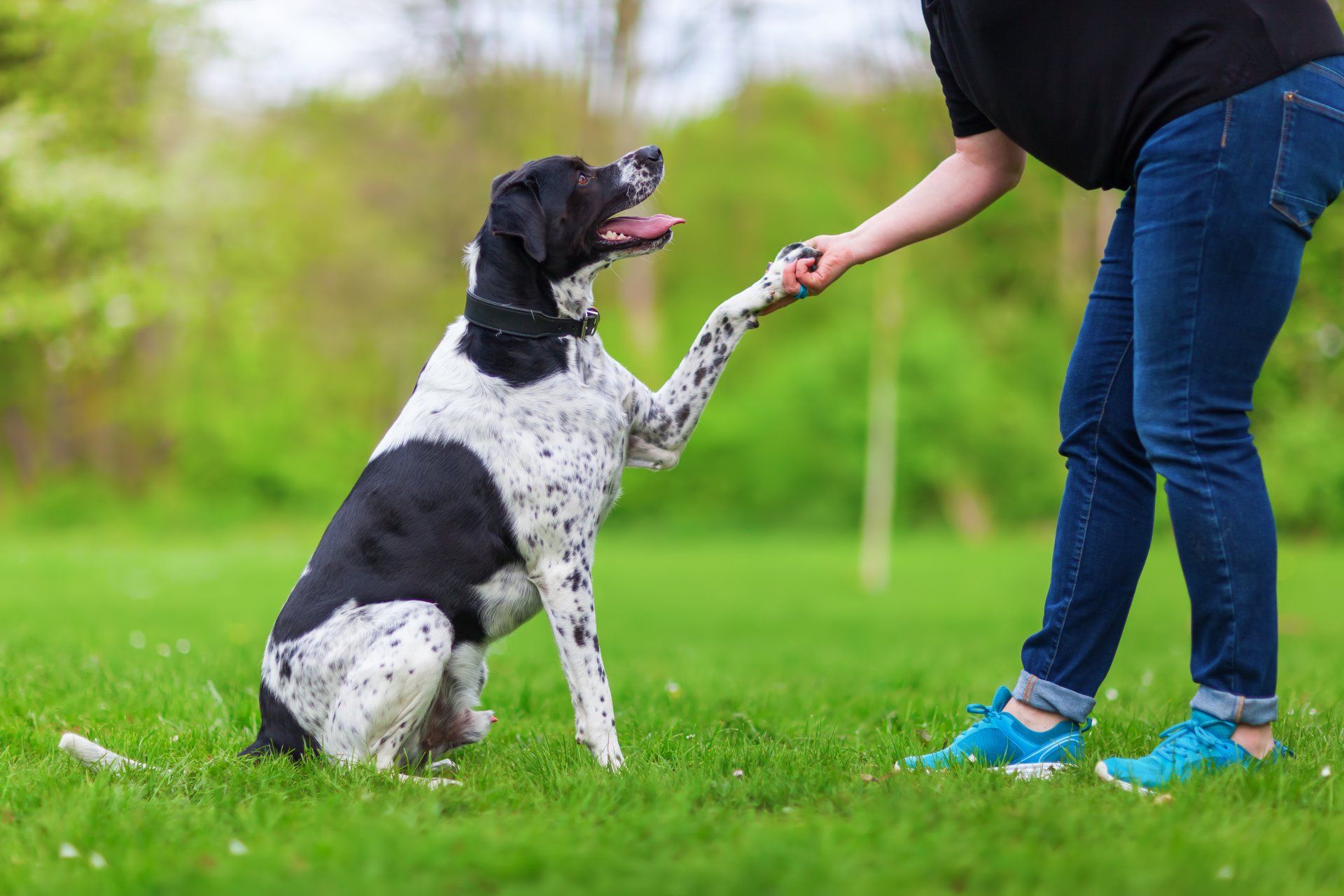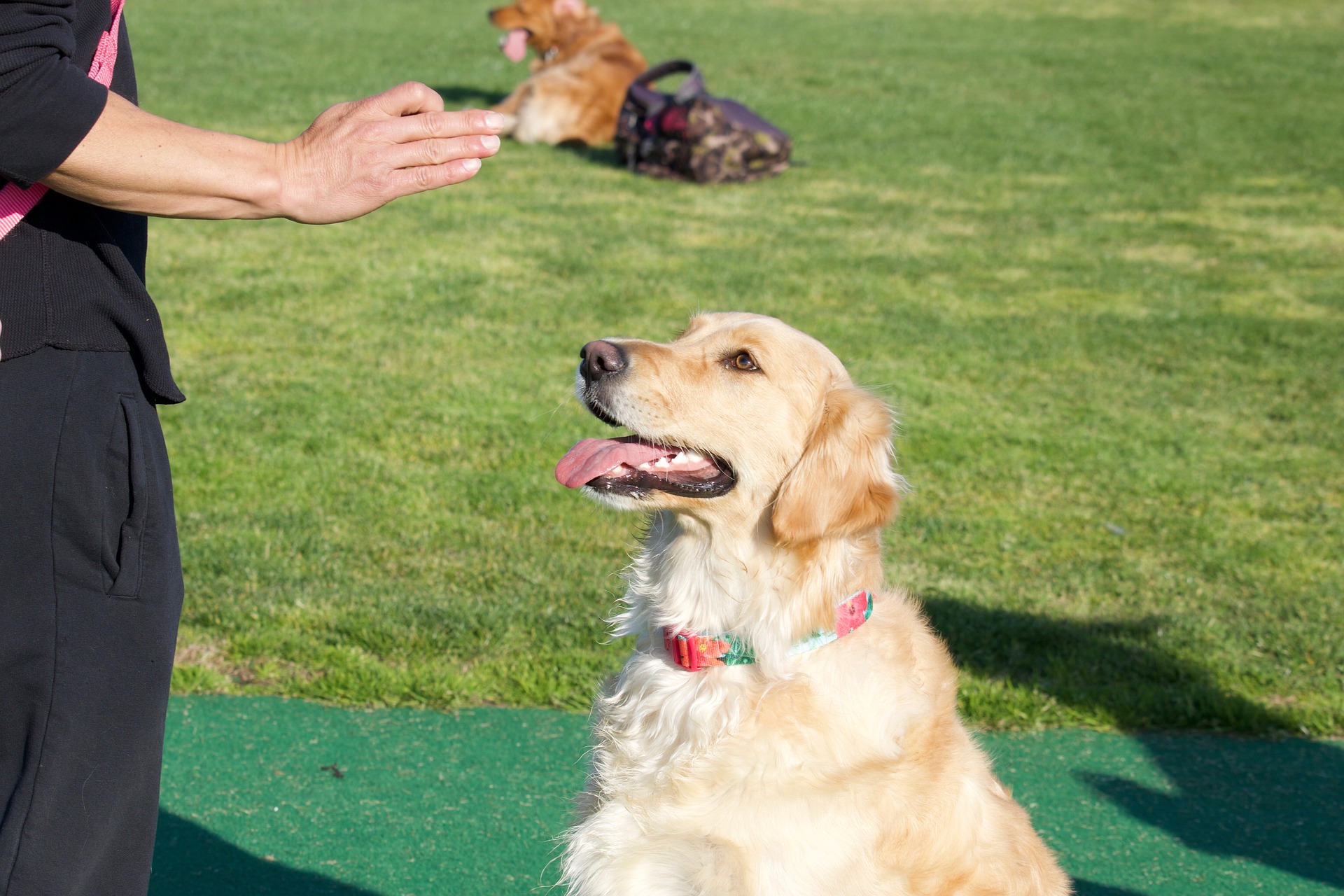Craft Training

Crate training is a popular method of training dogs that involves using a crate as a safe and comfortable space for the dog to rest and sleep. Crate training can provide many benefits for both the dog and the owner, including helping with house training, providing a safe space for the dog to retreat to, and preventing destructive behaviours.
To start crate training your dog, you will need to choose a crate that is the appropriate size for your dog. The crate should be large enough for the dog to stand up, turn around, and lie down comfortably, but not so large that the dog has room to use one end of the crate as a bathroom and the other end to sleep.
Once you have chosen a crate, you can start introducing your dog to it by placing treats, toys, and a comfortable bed or blanket inside. You can also feed your dog meals inside the crate to help them associate the crate with positive experiences.
To help your dog feel comfortable in the crate, it is important to make sure that the crate is located in a quiet, low-traffic area of your home. You can also cover the crate with a blanket or towel to provide a sense of security and privacy for your dog.

When introducing your dog to the crate, it is important to take things slowly and not force the dog into the crate. Encourage your dog to explore the crate on their own and provide positive reinforcement, such as treats and praise, for going inside.
As your dog becomes more comfortable with the crate, you can start to use it for longer periods of time. Start by leaving your dog in the crate for short periods, such as 10-15 minutes, and gradually increase the amount of time your dog spends in the crate.
It is important to note that crate training should never be used as a form of punishment for your dog. The crate should always be a safe and comfortable space for your dog to retreat to and should never be used as a way to discipline or punish your dog.
Crate training is a popular method of training dogs that involves using a crate as a safe and comfortable space for the dog to rest and sleep. Crate training can provide many benefits for both the dog and the owner, including helping with house training, providing a safe space for the dog to retreat to, and preventing destructive behaviours.
To start crate training your dog, you will need to choose a crate that is the appropriate size for your dog. The crate should be large enough for the dog to stand up, turn around, and lie down comfortably, but not so large that the dog has room to use one end of the crate as a bathroom and the other end to sleep.
Once you have chosen a crate, you can start introducing your dog to it by placing treats, toys, and a comfortable bed or blanket inside. You can also feed your dog meals inside the crate to help them associate the crate with positive experiences.
To help your dog feel comfortable in the crate, it is important to make sure that the crate is located in a quiet, low-traffic area of your home. You can also cover the crate with a blanket or towel to provide a sense of security and privacy for your dog.
When introducing your dog to the crate, it is important to take things slowly and not force the dog into the crate. Encourage your dog to explore the crate on their own and provide positive reinforcement, such as treats and praise, for going inside.
As your dog becomes more comfortable with the crate, you can start to use it for longer periods of time. Start by leaving your dog in the crate for short periods, such as 10-15 minutes, and gradually increase the amount of time your dog spends in the crate.
It is important to note that crate training should never be used as a form of punishment for your dog. The crate should always be a safe and comfortable space for your dog to retreat to and should never be used as a way to discipline or punish your dog.

conclusion
crate training can provide many benefits for both the dog and the owner, including helping with house training, providing a safe space for the dog to retreat to, and preventing destructive behaviours. To successfully crate train your dog, it is important to choose an appropriate size crate, introduce your dog to the crate gradually and with positive reinforcement, and use the crate as a safe and comfortable space for your dog to rest and sleep.
